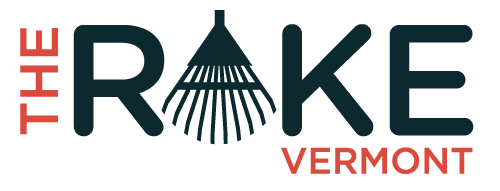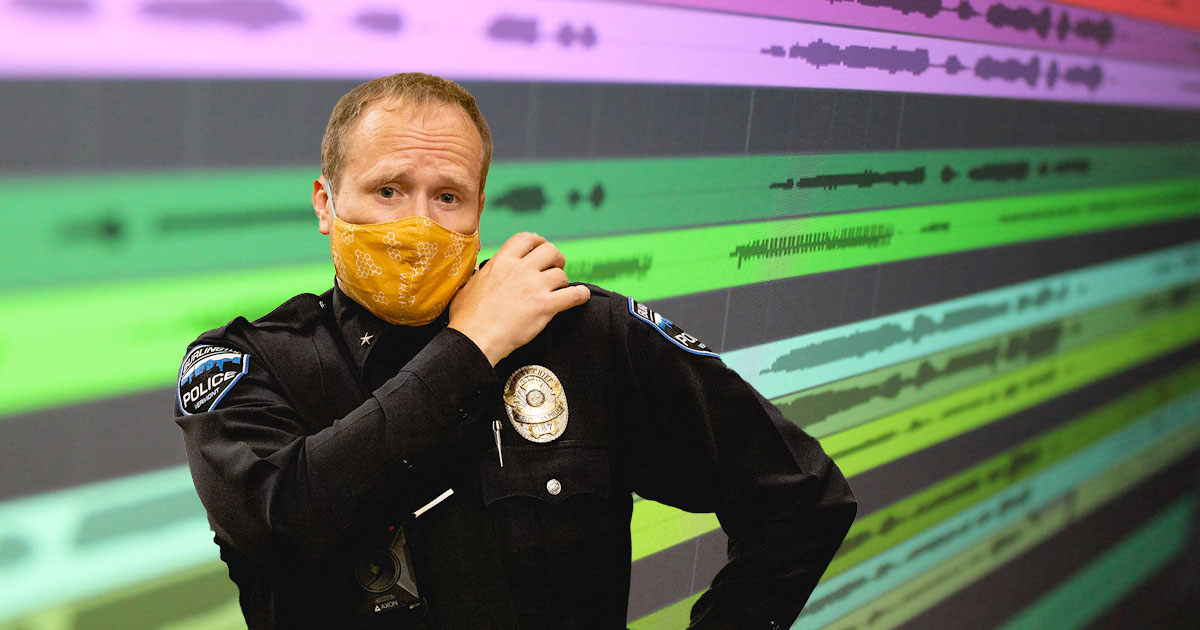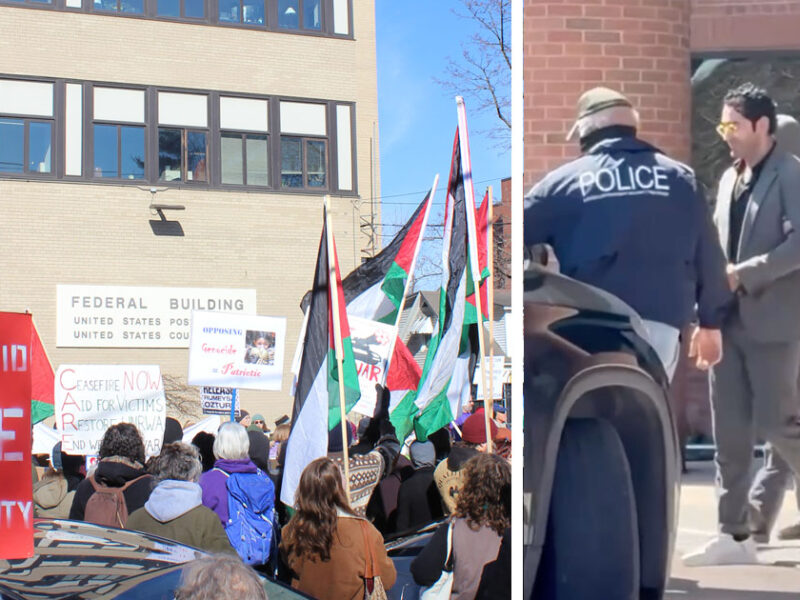Burlington’s interim Chief of Police Jon Murad has former NYPD Chief Bill Bratton to thank for much of his professional success, from getting a meteoric promotion to working in the private sector under Bratton with the consulting firm Teneo.
Most recently, Murad has joined Bratton’s new venture, the Public Safety Research Center (PSRC), as a member of its advisory board. The PSRC has only one listed sponsor, ShotSpotter, a controversial gunfire locator service.
PSRC and ShotSpotter: Shared Leadership, Funding, and Philosophy
The University of Cincinnati’s Institute of Crime Science created the Public Safety Research Center in February 2022, with a stated aim to be a “resource for law enforcement, community groups, and elected officials to help usher in a new era in public safety” while “emphasizing the importance of community, collaboration, data, and technology.”
It is no surprise that the PSRC primarily serves as a think tank to advance Bratton and Murad’s defining policing framework, Compstat and Precision Policing 2.0. This framework comes from, and is very similar to, both “broken windows” and stop-and-frisk policing, long-discredited cornerstones of Bratton’s time at the NYPD.
The PSRC and ShotSpotter share key players. Bratton joined ShotSpotter’s board of directors in 2017. The PSRC’s advisory board chair, Corey Haberman, an associate professor at the University of Cincinnati, has a history with ShotSpotter: he was the principal investigator in a five-month survey project for ShotSpotter in 2021, just before ShotSpotter gave an initial $42,000 of funding to the PSRC.
Haberman joined Murad and Bratton as speakers in a PSRC-sponsored webinar hosted on the ShotSpotter website. The webinar, titled “What Does Law Enforcement Need to Know About Precision Policing 2.0,” listed the three key issues facing policing today as: improving police-community relations, an increase in violent crime, and police recruiting and retention. (These three issues seem to starkly contrast the nationwide reckoning with policing prompted by the lack of accountability and oversight in the face of widespread police violence, which was not mentioned in the webinar.)
Haberman has tweeted multiple times about Murad, calling him, without evidence, one of the most “progressive police leaders out there today.”
When Haberman was asked by email about these potential conflicts of interest, especially around concerns that research would be biased towards funders, The Rake received no response.
A History of ShotSpotter Controversy
Criminal and forensic science use many practices that amount to, in the words of one law professor, “junk dressed up as scientific analysis,” which can lead to wrongful convictions. Lawyers and academics have long called for reform in the field, as techniques such as lie detector tests, fingerprint identification, and bite mark analysis have been proven unreliable at best and complete bunk at worst.
Many are raising evidentiary and methodological concerns about ShotSpotter technology, which relies on a system of networked audio sensors placed in public spaces that listen for sounds that resemble gunshots, triangulate the approximate location of the sounds, feed the waveforms through an algorithm for identification, and send the resulting analysis to a technician for review and forwarding to local police.
According to researchers, ShotSpotter, particularly in Chicago, has sent police out to hundreds of “false alarms.” The ACLU reported:
ShotSpotter false alarms send police on numerous trips (in Chicago, more than 60 times a day) into communities for no reason and on high alert expecting to potentially confront a dangerous situation. Given the already tragic number of shootings of Black people by police, that is a recipe for trouble.
Indeed, the Chicago IG’s analysis of Chicago police data found that the “perceived aggregate frequency of ShotSpotter alerts” in some neighborhoods leads officers to engage in more stops and pat downs.
The placement of sensors in some neighborhoods but not others means that the police will detect more incidents (real or false) in places where the sensors are located. That can distort gunfire statistics and create a circular statistical justification for over-policing in communities of color.
A study published in the Journal of Urban Health, looking at 68 counties that used the technology from 1999 to 2016, found no evidence that ShotSpotter reduces firearm violence in the long term nor did it lead to more murder or weapon-related arrests. A report by the MacArthur Justice Center found that Chicago police were deployed by ShotSpotter to more than 40,000 of what the Center termed “dead-end deployments,” which did not result in any subsequent action on the part of the police, between July 1, 2019 and April 14, 2021.
Michael Williams is an unfortunate case study in how ShotSpotter’s data has been used by prosecutors. A 65-year-old resident of Chicago, Williams was jailed for nearly a year awaiting trial, with the case relying in large part on a ShotSpotter forensic report submitted as evidence. During that time, he contracted COVID-19 twice and nearly took his own life. The prosecutor eventually dropped the case after withdrawing the ShotSpotter evidence. As ShotSpotter describes it, “The prosecutor’s theory was that the gunshot occurred in the victim’s car. Once ShotSpotter learned of this theory, it approached the prosecutor and informed him that the ShotSpotter evidence could not support this theory.” Why it took the better part of a year for this to be made clear has been left unstated by either the company or the prosecutor.
ShotSpotter’s own policies appear to run counter to the organization they sponsor: the PSRC’s third tenet states that transparency and accountability are vital aspects of policing and that agency information should be publicly available. ShotSpotter conceals its algorithm from the public, and it has not been peer-reviewed by any independent, outside sources. When it does provide access to courts, it is under “protective seal,” which means only the court can view it, not the public.
ShotSpotter leverages their relationships with police departments to win contracts and wage public relations efforts. This includes creating testimonial videos with police chiefs, offering to prepare police department applications for a federal grant for ShotSpotter, and hiring Bill Bratton as their Board Director. Any critical reporting about ShotSpotter is responded to quickly by the company, as evidenced by updates added to every news piece linked in this article. ShotSpotter has also sued a news outlet for defamation: Vice Media, for $300 million.
In the wake of the MacArthur Justice Center’s report last July on ShotSpotter’s use in Chicago, the company commissioned Edgeworth Analytics, a private consulting firm, to rebut the center’s findings. A comparison of the two reports by IPVM found, “The Edgeworth report does not convincingly respond to MJC criticisms of ShotSpotter’s method for calculating accuracy.”
Murad’s Thin Blurred Line
Amid a summer of controversy and bad press for ShotSpotter, Murad lauded the company in an August 2021 tweet:
“#PrecisionPolicing says investigate every gunfire incident as an attempted agg assault, because inches can separate a miss from a shooting from a homicide, and (fortunately) the number of people willing to pull a trigger is small. @shotspotter is one tool to help do that.”
Murad’s connection to ShotSpotter extends to his time on the NYPD as an assistant commissioner, when the department first instituted ShotSpotter in 2015. A record request made to the Burlington police department and Mayor’s office came back with no evidence that the administration is aware of Murad’s new professional relationship to ShotSpotter.
The Rake requested comment about whether Murad was being paid for any work with ShotSpotter, and received no response. The Rake also asked if Burlington was looking into bringing ShotSpotter to Burlington, and received no response.
This lack of transparency and accountability, despite PSRC’s tenets, is congruent with Murad’s approach to policing in Burlington: the acting chief has publicly come out against any civilian oversight of him or his department and has been accused of misleading the public. Instead, Murad continues to cling to theories and practices that have proven faulty and harmful to our communities. Given his professional relationships, this puts him in good company.



